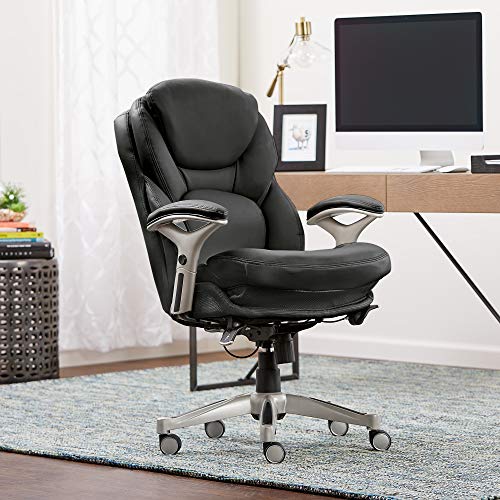You’re trying to concentrate on work, though you hear a loud squeaking noise every time you lean back in your chair. A noisy chair makes it hard for you to focus on the task at hand, so you want to find the solution as soon as possible.
An office chair makes noises when you lean back because of moving parts rubbing against each other, the screws that hold them are loose, or the manufacturer lubrication in chair joints has worn off. Luckily for you, these problems can be easily fixed from home.
Table of Contents
Reasons Your Office Chair is Making Noises
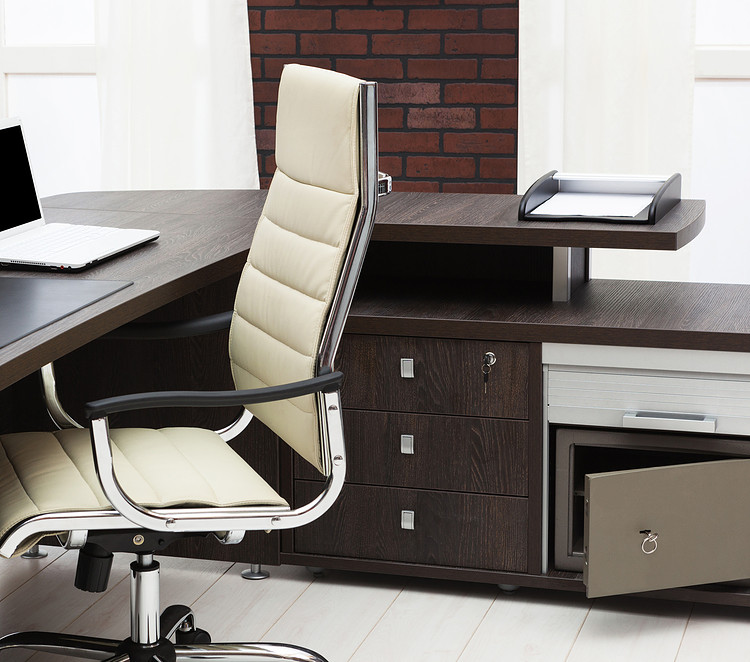
Here are some of the primary reasons office chairs make noises when leaning back on them:
- The chair wasn’t put together properly
- Moving parts are rubbing together
- Loose screws and bolts
- Lack of joint lubrication
- Tight or loose tension in the seat springs
If you aren’t a mechanic or consider yourself a handyman, you may have put your chair together wrong. The good news is a squeaky chair is relatively easy to fix from home.
Moving parts can rub together and cause a squeaking noise in new and old office chairs. Sometimes all it takes is for you to examine the chair’s underside and check for screws and bolts that are loose or touching to fix it.
When a chair first arrives, it comes pre-lubricated with oils to prevent parts from rubbing together and making noises. However, if you have owned your office chair for a few years, it is common for this lubricant to wear off.
Reapplying lubrication to the chair joints and seat springs can fix the lack of lubricant and noise issues.
Ways to Fix a Noisy Office Chair
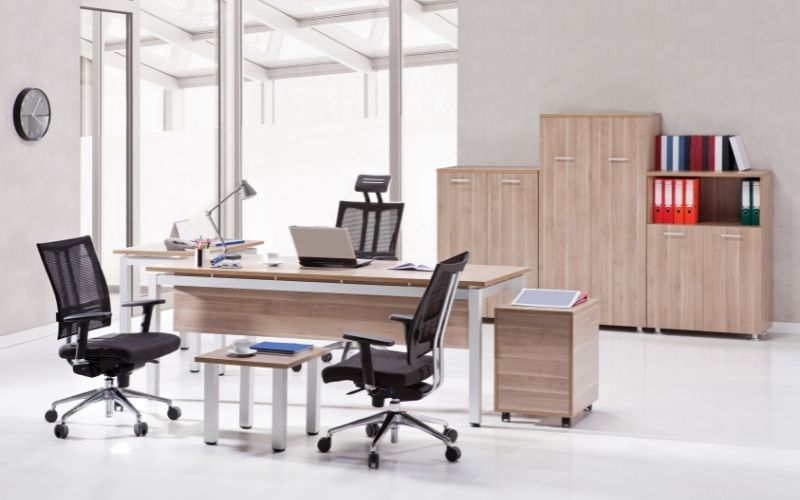
First and foremost, you need to figure out where the noise is coming from. To find the location of the sound, it’s easiest to have someone sit on the chair while you listen.
If this is not doable, you can do it alone. Simply turn your chair upside down and start moving some of the parts to find the noise.
Tighten loose bolts and screws
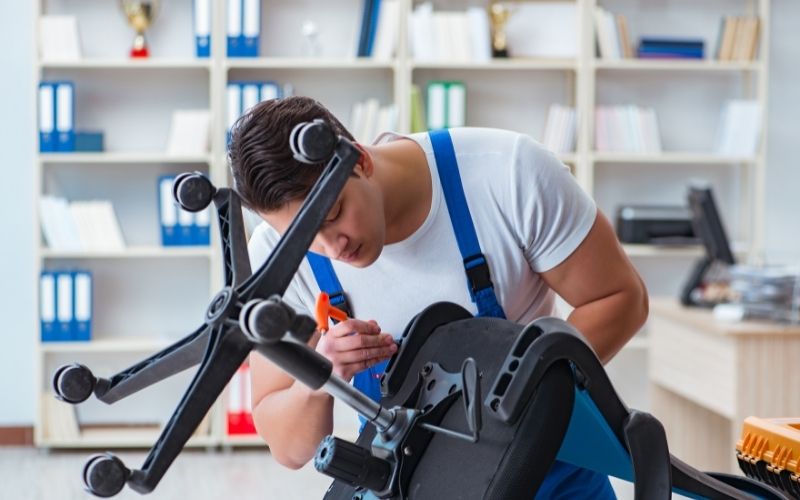
With your chair upside down, touch every bolt and screw joint on the bottom of the chair and check to see if any of them are loose. If you find some loose, tighten them with your hand or use a wrench or screwdriver, depending on the type of screw.
After you tighten the loose bolts and screws, put your chair right side up and test to see if the noise is still there. If it is, turn your chair back upside down and double-check for loose bolts and screws. Sometimes we miss it the first time around, and that’s okay!
If you’ve tightened all the external hardware and the noise is still there when you lean back, the noise is most likely coming from inside the chair joint or moving part.
Lubricate joints, springs, and moving parts
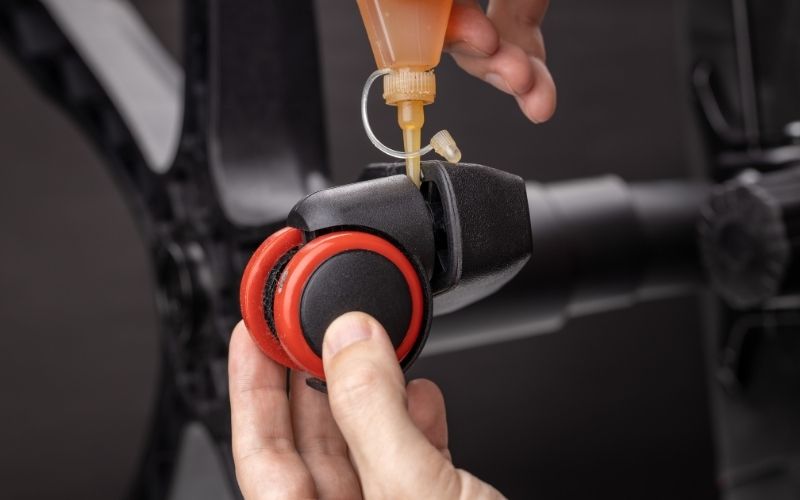
If you know where the noise is coming from, you can use WD-40 spray to prevent the chair’s moving parts from scraping or rubbing together. It is best to use this spray outside, in a garage, or in places you don’t want to get dirty or full of oil.
For people who live in apartments and don’t have the luxury of taking their office chair somewhere else, you can place a large garbage bag on the floor underneath the chair. Make sure to keep paper towels handy to wipe off any excess oil.
The springs or seat-tension springs that cushion your seat back may also cause noise. Check the back of your chair for a knob that tightens or loosens tension in the seatback. Once you find it, remove the knob and spray the springs inside the turn-knob housing.
Remove rust build-up and apply lubricant
Although this isn’t common, rust can build up on the bolts and screws on your chair. This is more often found on metal chairs in places with high humidity.
If there is rust build-up, you will want to scrape it off first with a wire brush or sandpaper and wipe it clean with a rag. Once that’s complete, tighten the screw and bolt and apply a lubricant spray.
Check the wheels for noise
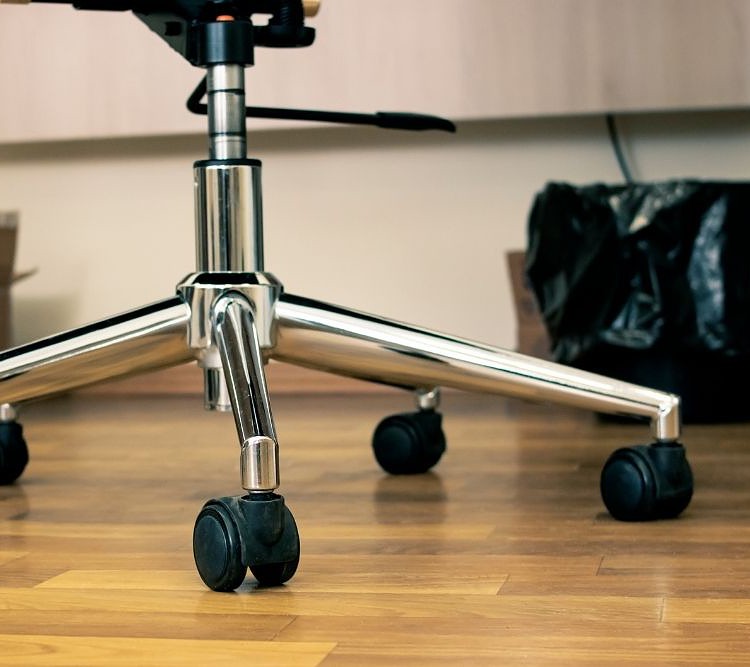
Many people forget to check this step. Although the noise happens when you lean back in your chair, the wheels can contribute to the noise.
Most standard wheels on office chairs come with a metal post that sticks into the leg frame of the chair. Over time, these metal posts wear down or become loose and cause noise.
Turn your office chair upside down, remove the wheels, and spray them with a WD-40 water-resistant silicone lubricant spray . Also, spray the inside of the metal post wheel housing.
Replace the office chair

If all else fails, you can always try and return the chair to the company you bought it from and get it replaced or fixed via warranty. Some office chairs can have three to twelve-year warranties on moving chair parts. It’s worth a shot!
If your warranty on the chair is expired, then maybe it’s time to buy a brand new office chair. This may not be what you want to do; however, it may be a blessing in disguise.
With today’s technology and ergonomic studies, newer office chairs are usually built with more comfort with the user’s health in mind.
Conclusion
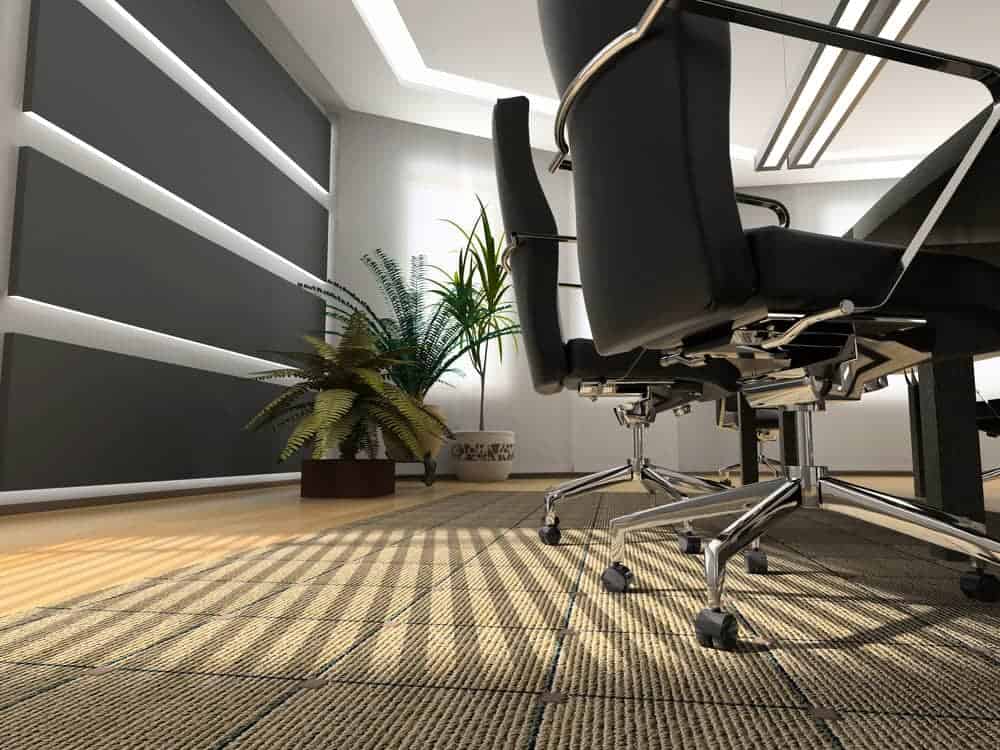
Your office chair could be making noise when you lean back for several reasons: it wasn’t put together correctly, moving parts are rubbing together, loose screws and bolts, there is a lack of joint lubrication, or it could be the wheels.
You can fix the noise in an office chair by tightening hardware pieces or spraying a lubricant on moving parts. If this doesn’t fix the problem, maybe it is time for you to buy a brand new office chair.
But don’t fret! This new office chair may be the best office chair you’ve sat on thus far.

My name is Vance, and I am the owner of To Ergonomics. Our mission is to improve your workflow by helping you create a supportive and welcoming environment. We hope that you’ll find what you’re looking for while you’re here.

